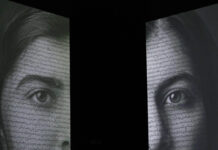It’s that time of year, yes Halloween is here and our region has its fair share of spooky goings on
The impressive Neo-Gothic building Manchester’s Albert Hall dates back to 1910, when it was built by Reverend Samuel Collier, with the upper hall a horseshoe design so he could better preach to his Methodist congregation.
It is thought by some that the poltergeist – accused of smashing glasses, turning lights on and off, and generally running amok about the place – is the ghost of Collier himself, upset about the building’s current use today?
Dating back more than 750 years, Salford’s Ordsall Hall is said to be haunted by a ghost known, curiously, as the White Lady. Mystery surrounds just who the woman might be – a jilted bride? A former maid of honour to Queen Elizabeth I? The spirit of Margaret Radclyffe, a woman who lived at the Tudor manor before ‘dying of a broken heart’ there in 1599?
Back in the City Centre the University’s Sackville building is saiod to have a ghostly presence
 At the end of the 19th century, work began on designing and building a large, modern institution where workers could learn. On the site of an old engineering works, Sackville Street Building was constructed. It opened its doors in 1902.
At the end of the 19th century, work began on designing and building a large, modern institution where workers could learn. On the site of an old engineering works, Sackville Street Building was constructed. It opened its doors in 1902.
Within just a few years, the decision was made to extend. The only problem was that the site next door was St Augustine’s Church – only the third Roman Catholic Chapel in the city. It had stood on the site since 1820, and somewhere between 5,000 and 15,000 people were buried in its churchyard.
The church would need to be knocked down – and all the bodies moved. And so, dozens of men and boys were hired to shovel up the earth and move it in wheelbarrows. The bodies buried there were moved – and even the crypts were cleared.
The process of relocating the deceased was not treated quite as sensitively as it would be today. This has led some people to suggest that the restless spirits of the former churchyard’s relocated patrons wander the corridors of Sackville Street Building, longing for peace.
And then there is John Dee, accused of bringing the Devil himself to Manchester in the reign of Elizabeth I.The one-time royal astrologer for Queen Mary, arrived in Manchester in 1596 to take up the post of Warden of the Manchester Collegiate Church.
A pious man who dabbled in the occult, he is believed to have summoned the devil while staying at Chetham’s School (then Christ’s College), leaving a ‘Satan’s hoof’ burn on the table. The macabre mark can still be seen today.
Wardley Hall is one of the oldest buildings in the North West and today is the residence of the Bishop of Salford
While it is today known as Wardley Hall, the building spent the first 200 years as “Skull House”.
According to legend, Skull House took its name from a skull that refused to be buried on the site. The skull in question was believed to be that of St. Ambrose Barlow, who was killed in 1641 for the simple act of being a Catholic priest.
At one point, exhausted by the numerous failed attempts to bury the skull, the owners of Skull House tossed it into the moat which surrounded the grounds. However, a devastating storm took over the land shortly after, and the moat had to be drained so the skull could be retrieved before another proper burial was tried.
The ghosts of Wythenshawe Hall are as plentiful as they are disturbing, and a frequent sight is the spirit of Mary Webb, who was a servant at the hall during the time of the Cromwell invasion.
Webb, along with her fiancé, died in the struggle for Wythenshawe Hall following the invasion of Cromwell’s men, and she is often heard sobbing throughout the home.
Webb’s spirit was once seen crying by a mother and daughter visiting the hall. The pair took pity upon the woman (who they believed to be alive) when they saw her travelling down a corridor, weeping to herself.
Wanting to comfort Webb, they followed her down the hall and into a room she had entered. The mother and daughter found that the weeping woman had disappeared entirely upon entering the room themselves.
Finally back in the City Centre,Kimpton Hotel said to be haunted by a war widow who tragically took her own life by throwing herself from the top of the staircase, landing at the base of the stairs on the marble floor.
There are also ghost children haunting the second floor, with the disembodied sounds of children’s laughter coming from empty rooms and corridors.







